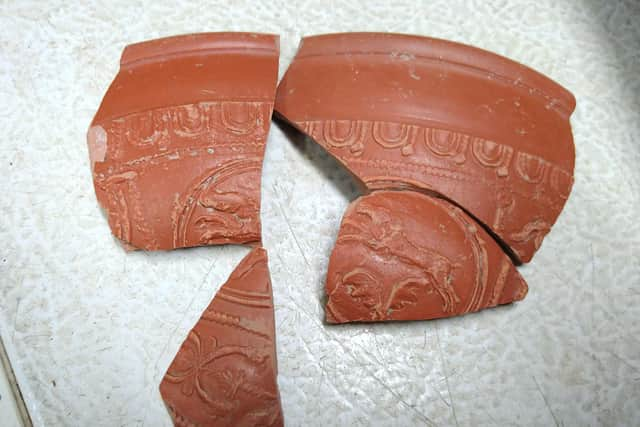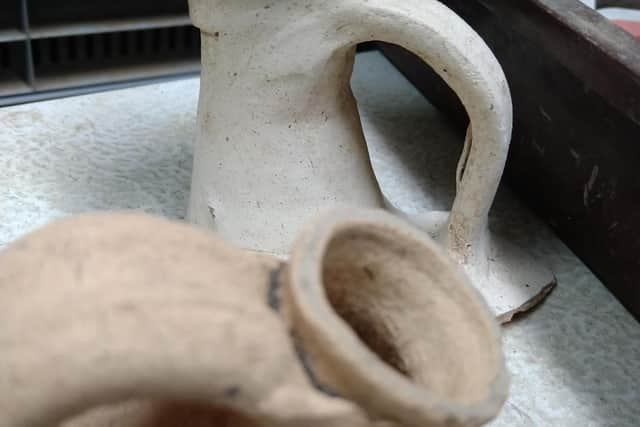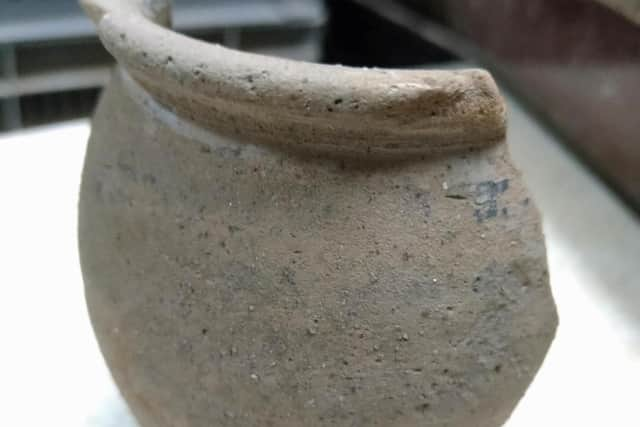HS2 archaeologists discover secrets of ancient Roman town near Aylesbury
and live on Freeview channel 276
HS2 archaeologists have excavated a Roman town in Fleet Marston, near Aylesbury and can now identify goings on from 2,000 years ago.
A team of around 50 archaeologists found over 1,200 ancient coins, along with several lead weights, indicating that this was an area of trade and commerce.
Advertisement
Advertisement
Parts of the widened road may have been used as a market, with extra room for carts and stalls.


Other metal objects, such as spoons, pins and brooches, were of a more domestic nature, while gaming dice and bells suggest that gambling and religious activity occupied people’s time here too.
The team uncovered a series of enclosures that contained evidence of domestic structures, as well as commercial and industrial activity.
These enclosures developed in a ladder-like plan either side of Akeman Street, a major Roman road that linked the Roman capital of Verulamium (modern St Albans) with Corinium Dobunnorum (now Cirencester) and going via Roman Alchester (near Bicester).
Advertisement
Advertisement
During the excavation the remains of its well-constructed limestone surface, and flanking drainage ditches were uncovered.


A HS2 Ltd spokesman said: "Apart from being home to many inhabitants, the settlement is likely to have been an important staging post for travellers and soldiers passing through Fleet Marston on their way to and from the garrison at Alchester."
Archaeologists explored the largest Roman cemetery in the county, it contained around 425 burials.
A HS2 spokesman added: "As was typical in the late Roman period, the cemetery predominantly contained inhumation burials but also included some cremation burials.
Advertisement
Advertisement
"The number of burials, along with the development of the settlement, suggests that there was a population influx into the town in the mid to late Roman period, linked perhaps to increased agricultural production.


"There are two separate areas of burials suggesting the cemetery may have been organised by tribe, family, ethnic grouping.
"Amongst the buried population at Fleet Marston are a number of decapitated burials, approximately 10% of those buried there.
"There are several instances of the head being placed between the legs or next to the feet. One interpretation of this burial practice is that it could be the burial of criminals or a type of outcast, although decapitation is well-known elsewhere and appears to have been a normal, albeit marginal, burial rite during the late Roman period."
Advertisement
Advertisement
COPA JV archaeologists oversaw the operation on behalf of HS2.
Richard Brown, Senior Project Manager for COPA said: “The excavation is significant in both enabling a clear characterisation of this Roman town but also a study of many of its inhabitants.
"Along with several new Roman settlement sites discovered during the HS2 works it enhances and populates the map of Roman Buckinghamshire."
Fleet Marston is one of over 100 archaeological sites that HS2 has examined since 2018 between London and Birmingham.
Helen Wass, head of heritage at HS2 Ltd said:
Advertisement
Advertisement
“The HS2 archaeology programme has enabled us to learn more about our rich history in Britain. The large Roman cemetery at Fleet Marston will enable us to gain a detailed insight into the residents of Fleet Marston and the wider Roman Britain landscape.
“All human remains uncovered will be treated with dignity, care and respect and our discoveries will be shared with the community. HS2’s archaeology programme seeks to engage with all communities both local and nationally to share the information and knowledge gained as well as leaving a lasting archival and skills legacy.”
A programme of post-excavation assessment and analysis will be carried out over the next few years.
The team hopes to discover more about rigins, diet, family links, lifestyles and beliefs in the region.